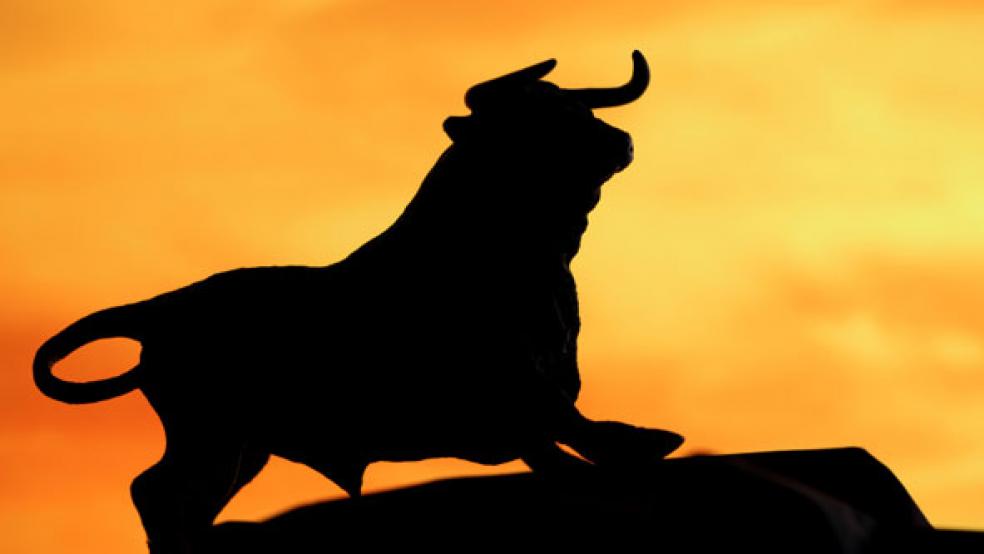A giant replica of a $1 billion check from Microsoft for the purchase of Facebook hangs in the home of some early (and very young and rich) San Francisco investors as a reminder of their decision to reject a takeover bid by the computer giant about five years ago. At the time, it seemed gutsy, maybe even greedy. But in the wake of Goldman Sachs’s decision to invest $450 million in the privately held social networking leader (along with $50 million from Russia’s Digital Sky Technologies), putting Facebook’s imputed value at $50 billion, that decision seems downright brilliant. It’s a reminder that for entrepreneurs with the right stuff, America is still a terrific place to turn a new idea into a great fortune.
The Goldman bid also seemed to capture a newly buoyant mood among investors that sent U.S. stocks to new highs on the first trading day of 2011. The S&P 500 rose 1.1 percent to 1,271.87, its biggest gain in a month. That follows a 13 percent gain for 2010 and a 39 percent rise since the end of 2008, marking the biggest two-year advance since the end of the 1990s. Meanwhile, the Dow Jones Industrial Average rose 8 percent to 11,667 yesterday, led by Bank of America, which spiked 6 percent on news that it had settled a mortgage dispute with Fannie Mae and Freddie Mac. And the technology-heavy NASDAQ closed up 1.5 percent at 2,692, propelled by advances in such bellwether tech stocks as Apple Inc., Hewlett-Packard Co. and NetApp, Inc.
Is this upbeat beginning for the new year an omen of what will follow?
Market history suggests a strong January often presages an up year for stocks. Plus, this is the third year of the presidential election cycle, which has historically been good for stocks. And there were fresh signs yesterday that the U.S. economic recovery, bolstered by stimulative (QE2) and fiscal policy (extension of the Bush tax cuts and unemployment benefits), is on track.
Among them:
- U.S. manufacturing expanded in December at the fastest pace in seven months, according to heavily-watched readings of the Institute for Supply Management’s index, which climbed to 57 from 56.6 in November. A reading greater than 50 points to expansion. Meanwhile, ISM’s measure of new manufacturing orders hit a seven-month high in December.
- Global growth remains strong – and that’s important to the U.S. since half of the earnings of S&P 500 companies come from abroad. Euro-zone manufacturing data showed the sector's expansion accelerated more than expected in December, as industrial output in Spain and Ireland began to catch up with that of Germany and France. Meanwhile in Asia, China’s growth appears to be slowing but gradually from an estimated 10.1 percent in 2010 to a still robust 9.2 percent in 2011, according to Credit Suisse.
- Construction spending rose for a third month, helped partly by federal government projects. A 0.4 percent gain in November followed a 0.7 percent increase in October, according to the Commerce Department.
- Car sales in November rose to a 12.26 million unit pace, the highest since the government’s cash-for-clunkers program in August 2009, according to industry data.
- Economists are forecasting an average of 2.5 million new jobs this year, according to a CNN Money survey, for “the best one-year gain in hiring since the white-hot labor market of 1999.”
No wonder economists are striking a more upbeat tone. Take Goldman chief economist Jan Hatzius, who in July was decidedly downbeat on the U.S. economy, predicting a second half slowdown due largely to expectations of restrictive fiscal and monetary policy. But in the wake of QE2 and the extension of the Bush tax cuts, he’s turned cheery, increasing his forecast for real GDP growth to 3.4 percent in 2011 and 3.8 percent in 2012 (up from 2.7 percent and 3.6 percent) along with low inflation, falling unemployment, only modestly-higher interest rates and a 15 percent surge in corporate profit margins.
Still, there are reasons to curb your enthusiasm, at least a little. Among the economic gremlins that could yet turn a New Year’s rally into a rollercoaster ride:
- Investor sentiment is extremely bullish, which often presages a market drop.
- The European debt crisis could worsen.
- China’s effort to combat inflation could slow its economy more than expected.
- Faster-than-expected growth in the U.S. could mean a resurgence of inflation, and higher interest rates here.
- State budget woes could erupt into a series of defaults that spook credit markets.
- Political gridlock in Washington could spark a crisis over the extension of the debt ceiling.
What to do? Brace yourself for another volatile year. Hedge against the worst by putting some money into inflation hedges like gold, silver and commodities. Beware of overexposure to bonds, particularly long-term bonds, which will fall in prices as interest rates rise. Stay diversified and focused on your long-term goals. And don’t miss out on the rally in U.S. and global equities. There is nothing certain in financial markets. But history suggests that when earnings are rising so are stock prices.


